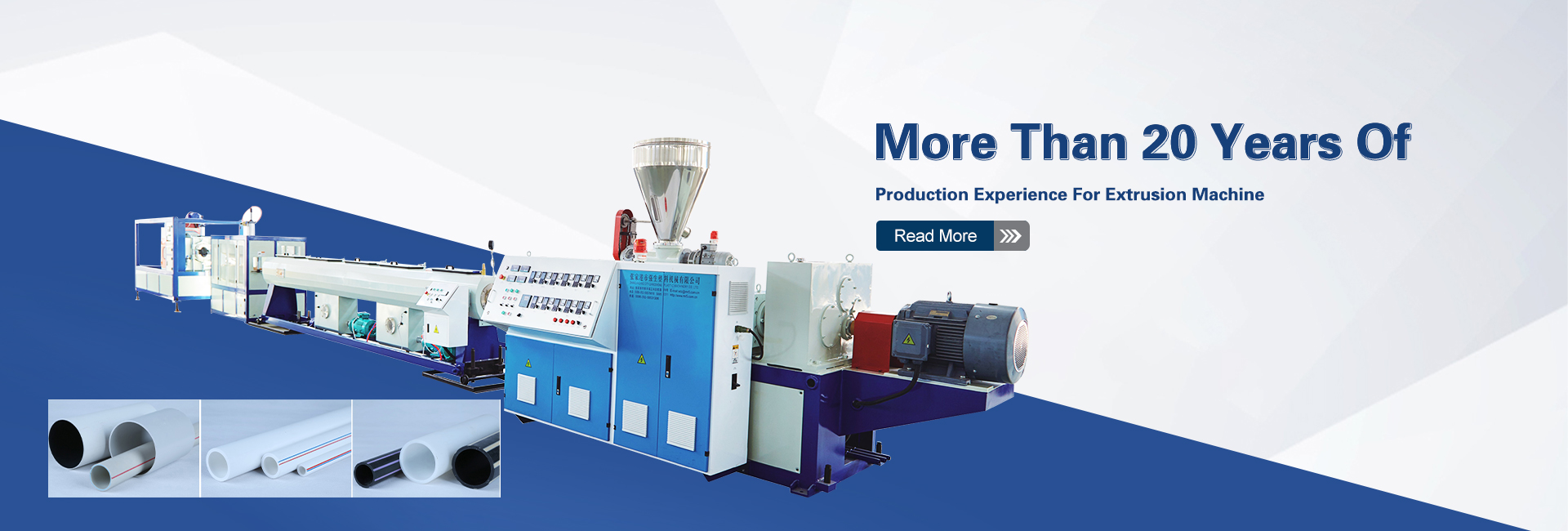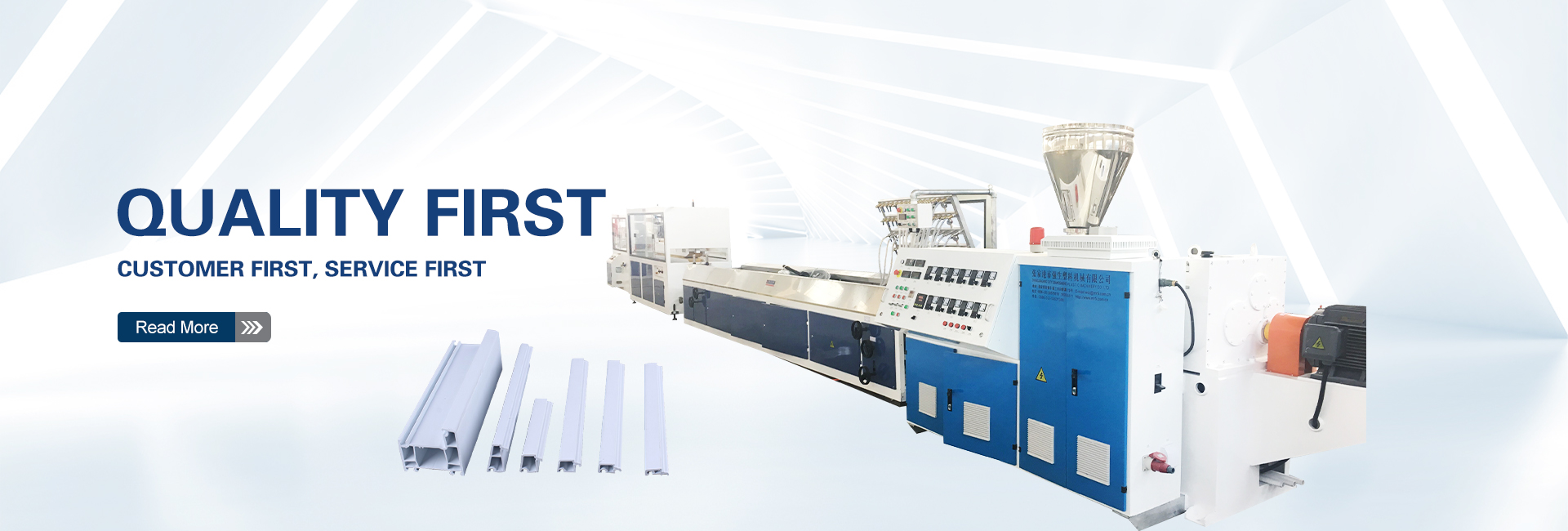The PVC foam board extrusion line represents a significant advancement in plastic processing technology, offering versatile solutions for various industries. As a manufacturer dedicated to innovation and sustainability, Qiangshengplas aims to provide comprehensive insights into the capabilities, benefits, and applications of the PVC foam board extrusion line. This article delves into the intricacies of this technology, its impact on different sectors, and the collaborative efforts driving its development.
Understanding PVC Foam Board Extrusion Line
PVC (polyvinyl chloride) foam board extrusion is a process that transforms raw PVC materials into lightweight, durable, and versatile foam boards. These boards are widely used in construction, advertising, furniture, and other industries due to their excellent properties, including resistance to moisture, fire, and chemicals.
The extrusion line is a sophisticated system comprising various components, including an extruder, die, cooling system, and cutting unit. The process begins with the extrusion of PVC material through a die, forming a continuous sheet. This sheet is then cooled and shaped into foam boards with the desired thickness and dimensions.
Key Components and Process of PVC Foam Board Extrusion Line
Extruder: The heart of the extrusion line, the extruder melts and mixes the raw PVC material with additives such as stabilizers, foaming agents, and modifiers. The homogeneous mixture is then pushed through the die to form a continuous sheet.
Die: The die is crucial in determining the shape and thickness of the foam board. It precisely controls the flow of the molten PVC, ensuring uniformity and consistency in the final product.
Calibration Table: After extrusion, the molten sheet passes through a calibration table where it is cooled and shaped. The calibration table consists of cooling rolls and vacuum systems that help achieve the desired thickness and smooth surface finish.
Haul-off Unit: The haul-off unit pulls the cooled sheet through the extrusion line at a controlled speed. This ensures that the foam board maintains its dimensions and properties.
Cutting Unit: Finally, the cutting unit trims the foam board to the required length, making it ready for various applications.
Advantages of PVC Foam Board Extrusion Line
The PVC foam board extrusion line offers numerous benefits, making it an attractive choice for manufacturers and end-users alike. Some of the key advantages include:
Lightweight and Durable: PVC foam boards are lightweight yet sturdy, providing excellent mechanical strength and durability. This makes them ideal for applications where weight reduction is crucial without compromising on performance.
Versatility: The extrusion process allows for the production of foam boards in various thicknesses, sizes, and surface finishes. This versatility makes PVC foam boards suitable for a wide range of applications, from signage and advertising to interior decoration and construction.
Moisture and Chemical Resistance: PVC foam boards are resistant to moisture, chemicals, and corrosion, making them suitable for both indoor and outdoor use. They do not warp, rot, or deteriorate, ensuring long-lasting performance.
Fire Retardant: The inherent fire-retardant properties of PVC foam boards enhance safety in applications where fire resistance is essential, such as in building materials and transportation.
Eco-friendly: PVC foam boards are recyclable and can be reused in various applications, contributing to sustainability and reducing environmental impact. The extrusion process itself is energy-efficient and minimizes waste generation.
Applications of PVC Foam Board Extrusion Line
The versatility and superior properties of PVC foam boards make them suitable for a wide range of applications across different industries. Some of the notable applications include:
Construction: In the construction industry, PVC foam boards are used for wall cladding, partitions, ceiling panels, and insulation. Their lightweight nature, coupled with durability and moisture resistance, makes them ideal for building materials.
Furniture: PVC foam boards are popular in the furniture industry for making cabinets, shelves, and decorative panels. Their smooth surface finish and ease of machining allow for creative and intricate designs.
Advertising and Signage: The advertising industry extensively uses PVC foam boards for signage, displays, and exhibition stands. The boards can be easily printed, painted, or laminated, offering vibrant and eye-catching visuals.
Interior Decoration: PVC foam boards are used for interior decoration purposes, such as wall panels, decorative partitions, and false ceilings. Their aesthetic appeal and customizable surface finishes enhance the visual appeal of interiors.
Automotive: In the automotive sector, PVC foam boards are used for interior panels, headliners, and trunk liners. Their lightweight and fire-retardant properties contribute to vehicle safety and efficiency.
Personal Experience and Insights
As a representative of Qiangshengplas, I have had the privilege of working closely with clients across various industries, witnessing the transformative impact of PVC foam board extrusion lines. One particular experience that stands out involved a collaboration with a leading construction company.
The company was looking for a sustainable and cost-effective solution for interior wall panels in a large commercial building project. Traditional materials were either too heavy, expensive, or lacked the necessary fire resistance. After understanding their requirements, we recommended our advanced PVC foam board extrusion line.
The project involved customizing the extrusion line to produce foam boards with specific dimensions and fire-retardant properties. Throughout the project, our team worked closely with the construction company, providing technical support and ensuring seamless integration of the foam boards into their construction process.
The result was a resounding success. The PVC foam boards not only met all the technical specifications but also provided significant cost savings and enhanced safety. The construction company was impressed with the quality and performance of the foam boards, leading to a long-term partnership.
This experience reinforced the importance of understanding client needs and delivering tailored solutions. It also highlighted the growing demand for sustainable and innovative materials in the construction industry.
Future Trends and Innovations
The future of PVC foam board extrusion line technology is promising, with ongoing research and development aimed at further enhancing its capabilities. Some of the emerging trends and innovations include:
Advanced Additives: The development of new additives and modifiers is expected to improve the mechanical properties, UV resistance, and weatherability of PVC foam boards. These advancements will expand their application range, particularly in outdoor environments.
Digital Integration: The integration of digital technologies, such as IoT (Internet of Things) and AI (Artificial Intelligence), into extrusion lines is set to revolutionize the manufacturing process. Smart sensors and data analytics can optimize production parameters, enhance quality control, and reduce downtime.
Sustainable Practices: The focus on sustainability will drive innovations in recycling and waste management within the extrusion process. Advanced recycling techniques will enable the reuse of PVC waste, reducing the environmental footprint of foam board production.
Customization and Flexibility: The demand for customized solutions will lead to more flexible extrusion lines capable of producing foam boards with unique shapes, textures, and finishes. This flexibility will cater to the diverse needs of different industries.
Enhanced Safety Standards: Ongoing research into fire-retardant properties and safety standards will ensure that PVC foam boards continue to meet stringent regulations in various applications, particularly in construction and transportation.
Conclusion
The PVC foam board extrusion line is a game-changer in the plastic processing industry, offering sustainable, versatile, and high-performance solutions for a wide range of applications. By understanding the key components, benefits, and applications of this technology, manufacturers and end-users can harness its full potential.
At Qiangshengplas, we are committed to driving innovation and sustainability in the extrusion process. Our dedication to quality, customization, and client satisfaction ensures that we deliver solutions that meet the evolving needs of various industries. By embracing the advancements in PVC foam board extrusion line technology, we can contribute to a more sustainable and efficient future.
In conclusion, the PVC foam board extrusion line exemplifies the perfect blend of technology and sustainability. Its ability to produce lightweight, durable, and eco-friendly foam boards makes it an invaluable asset in today’s environmentally conscious world. As we continue to innovate and collaborate, the possibilities for this technology are endless, paving the way for a greener and more sustainable future.
Post time: Jul-04-2024



